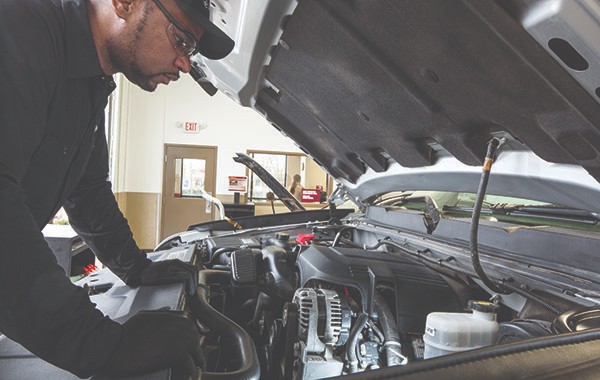Does Patching A Tire Work?

If you’ve ever experienced a flat tire, you know the importance of finding a solution quickly. One common method for addressing a punctured tire is to patch it, but does it actually work? Let’s break down whether patching a tire is a reliable fix.
What is Tire Patching?
Tire patching involves sealing a hole or puncture in the tread area of a tire with a rubber plug or patch. This is usually done after the tire has been removed from the wheel. The goal is to prevent air from escaping and to restore the tire’s structural integrity temporarily or permanently, depending on the severity of the damage.
How Does Tire Patching Work?
- Identify the Puncture:
- The puncture must be located in the tread area of the tire, not the sidewall, as sidewall damage cannot typically be patched effectively.
- Removal and Inspection:
- After the tire is removed, the puncture site is cleaned, and the damage is assessed to ensure it’s repairable.
- Application of Patch:
- A rubber patch is applied to the inside of the tire over the puncture. This patch creates a seal that prevents air from leaking out. Some repairs may also use a rubber plug inserted into the hole.
- Rebalancing and Reinstallation:
- Once patched, the tire is balanced and reinstalled on the vehicle.
Does Patching A Tire Actually Work?
Advantages of Tire Patching
- Temporary Fix: A patch can be a good short-term solution for minor punctures. It can get you back on the road without the need for a costly replacement.
- Cost-Effective: Patching a tire is generally cheaper than buying a new tire, especially if the damage is minimal.
- Quick Solution: If done correctly, patching is a fast fix that can get your vehicle back on the road within a short time.
Limitations of Tire Patching
- Tire Placement Matters: You can only patch tires in the tread area, not on the sidewall or shoulder. Sidewall damage generally requires replacement because it can’t be safely patched.
- Long-Term Durability: While a patch may work temporarily, it may not hold up over the long run, especially if the tire has significant wear or damage.
- Repair Quality: A patch is only effective if done correctly. If not applied properly, the tire may still leak air or even fail unexpectedly.
When Should You Patch a Tire?
- Small Punctures: A patch is typically sufficient for small punctures (less than 1/4 inch in diameter) that occur in the tread area.
- Temporary Solution: If you need to get your car to a service shop, a patch can buy you time until a proper tire replacement or repair is done.
When Should You Replace a Tire?
- Sidewall Damage: If the puncture is on the sidewall, you should replace the tire. Sidewall repairs are generally not safe.
- Excessive Damage: If the puncture is too large, or the tire has multiple holes, patching may not provide a reliable solution, and replacement is necessary.
Conclusion
Patching a tire can work, but it is best for small punctures in the tread area. It’s an effective temporary solution that can help get you back on the road quickly. However, it’s important to monitor the patched tire for any signs of air leakage and consider replacing the tire if the damage is more extensive. If you have any doubts about whether a patch is appropriate, consult a professional to ensure your safety on the road.
Also Check:






3 Comments